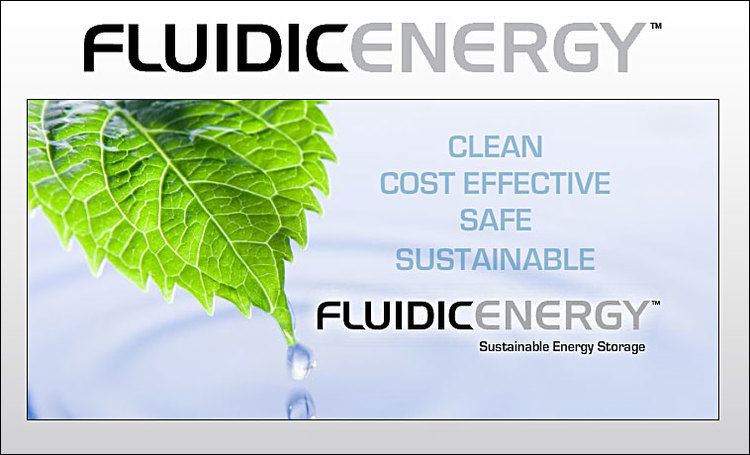Headquarters Scottsdale Type Privately held company | Founded 2007 | |
 | ||
Key people Steve Scharnhorst, CEORamkumar Krishnan, CTO | ||
Plts pulau sekunyit 15 kwp pt fluidic energy indonesia
Fluidic Energy is a for-profit corporation based in Scottsdale, Arizona that focuses on the development of energy storage solutions, based on its proprietary metal-air battery technology and integrated intelligence. The company is distributing its systems worldwide for long duration energy storage applications from rural electrification to critical backup power and has strong ties throughout the US, Latin America, Asia, and Africa. In March 2015 the Company signed a deal with Caterpillar, which included an equity investment in Fluidic Energy as well as a commercial agreement to collaborate in the microgrid and telecommunications markets. Over the following year, the company announced two separate MOUs for some of the largest renewable-energy rural electrification projects of their kind. The Company is dedicating its operations to “paving the path for the smart, sustainable grid of the future.”
Contents
The company is selling its systems to large blue-chip customers as a replacement for diesel generators or lead acid batteries in markets where the electricity grid is unreliable or remote areas without electricity access. In current applications, Fluidic is claiming significant advantages over traditional batteries. These advantages include safe systems with longer life, lower costs, higher temperature ranges and deeper depth of discharge capability. It appears the company is the first to integrate intelligence into the cell level of the battery system creating a new standard for the definition of a “smart battery.”
Financial History
The exact investment made by Caterpillar has not been released as of March 2015.
In November 2013, the International Finance Corporation (IFC), a member of the World Bank Group announced its $7 million investment into the company. In 2013 the firm also closed a private funding round of $34.5 million, while in 2011 it raised $33.4 million.
Prior to that, Fluidic has received funding from both private sources and two grants from the Advanced Research Projects Agency-Energy (ARPA-e) of the United States Department of Energy.
Fluidic Energy has received two separate grants through the ARPA-E Office. The first ARPA-e grant of $5,133,150 was led by Arizona State University out of the FOA1 program and was focused on ionic-liquid-based metal-air batteries (MAIL batteries). The second ARPA-e grant, of $3 million was led by Fluidic out of the GRIDS program and was focused on an Advanced Multi-functional Energy Storage (AMES) system based on Fluidic's metal-air platform.
Technology
Fluidic Energy's fielded commercial products are built around a rechargeable zinc-air battery technology developed initially at Arizona State University, with continued development at the company since formed in 2006. There are many potential cost, energy density and sustainability advantages of metal-air batteries in general, and the development of a practical and high-cycle life zinc-air battery has long been considered a significant opportunity in the energy storage space.
At a high level, the potential advantages of rechargeable metal-air batteries, and particularly zinc-air batteries, are associated directly with the use of diatomic oxygen from the atmosphere as the source of oxidant in the battery. The absence of a stored solid oxidant within the cell means that, in principle, the energy density of these cells can be quite large. At the same time the absence of solid oxidant at the cathode, the use of low cost and abundant metals, such as zinc, at the anode and the absence of hermetic packaging means that fundamentally the cost of metal-air batteries can be very low.
Historically, issues related to dendrite formation at the anode and the absence of a long-life bifunctional air-cathode have limited the cycle life of zinc-air systems. Solving these two challenges has long been seen as the key to success in these systems.
As of 2014, it appears that Fluidic Energy is the only company selling commercial rechargeable zinc-air battery systems. Fluidic Energy has been selling commercial backup solutions for telecom sites and in emerging regions since 2011 and has moved into microgrid and other long duration applications. Fluidic has covered a significant number of commercial outages as reported by the company on their website.
Description of ARPA-e "MAIL" Program
The development efforts within this program were focused on the use and development of ionic liquids as the electrolyte in metal-air batteries and to overcome some of the known challenges specific to Zinc-air batteries. As typically manufactured, such cells are not recharged due to dendrite buildup during the recharging cycle. This results in the cell shorts and not holding a charge when the dendrites connect the anode with the cathode.
This concept has two significant benefits:
